Rhus Juice, the New Lemonade
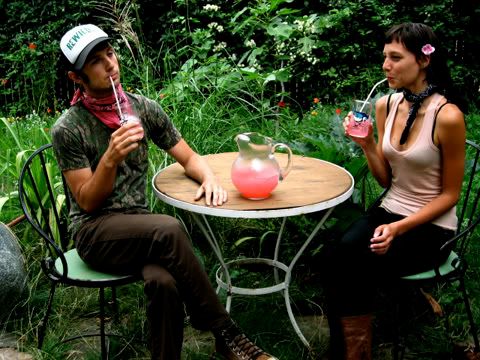
A while back I saw one of Rix’s blogs about making juice from sumac berries. I sort of forgot about it, but the flower cluster stuck in my head as an unusual looking thing. So when Penny and I rode our bikes around looking for herbs for her infusion, I happened to see some sumac. I asked Penny if we could use it to make something and she said yes. So we gathered a few of the heads, went home and read Rix’s blog again to see how to make the juice.
First you get a few of the flower/berries. They look like this:
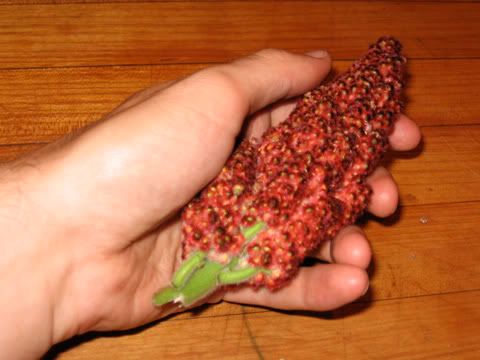
Then you put them in a bowl or pot with cold water:

Then you mash them up with your hands:
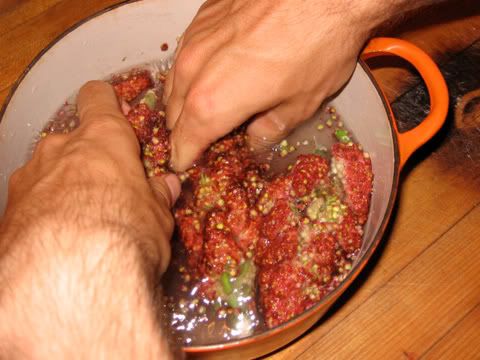
The flowers/berries break away easily and you have a pinkish broth of flower/berries:
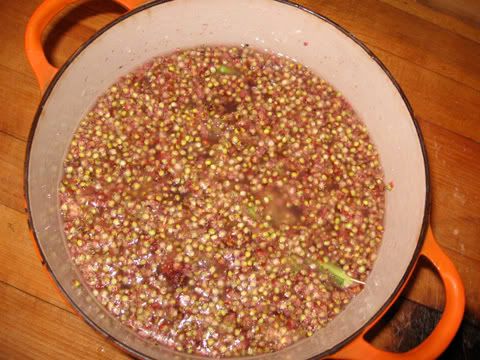
Then you sample the juice:
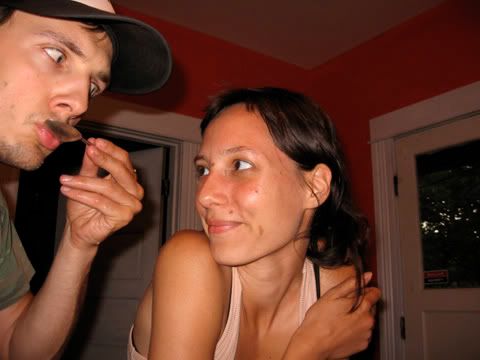
Than you filter it through a pink bandanna:
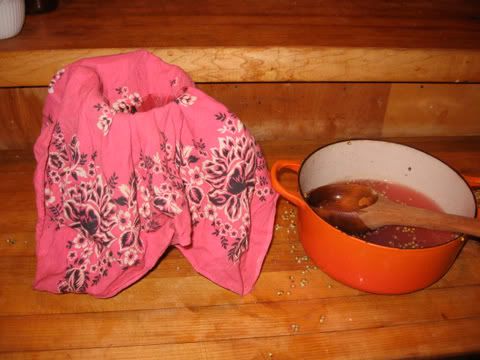
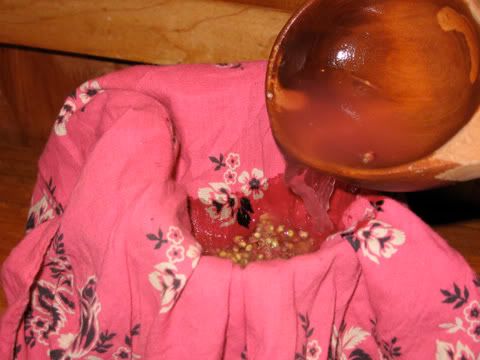
Than you drink it. Mmmm. Delicious pink lemonade tonic, high in vitamin C and also works as an astringent and anti-septic. Move over lemonade, Rhus Juice just owned you!

Thanks Rix for putting Sumac on my radar, and thanks Penny for helping me make the juice!
—
Show your support and appreciation for Urban Scout
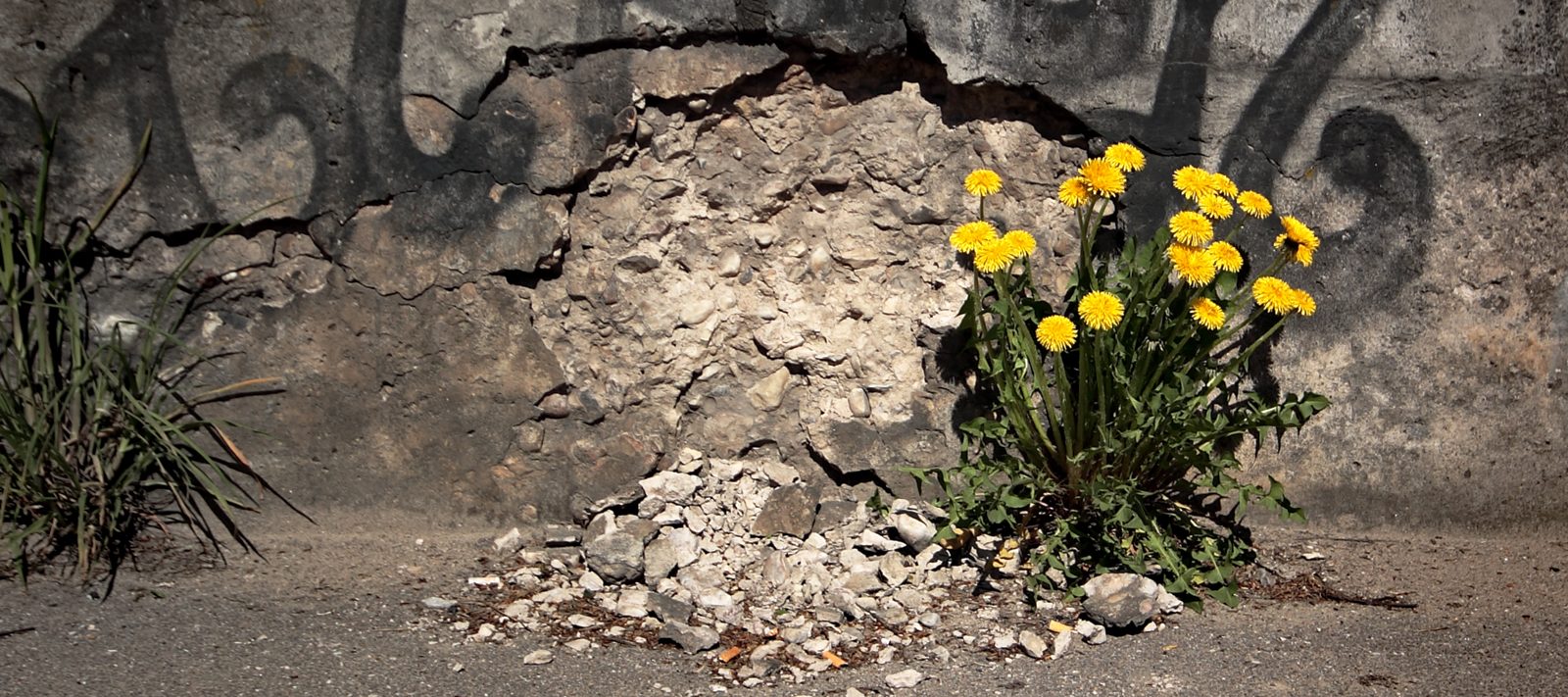

Pingback: Herbal Scavenger Hunt, July 27th-28th, 2007 « Penny Scout: Adventures in Feral Failure
Hi Urban Scout, Hi Penny Scout,
Went for a morning walk in the local woods today with my dog and handed out bread here and there for the wildlife within.
Came across some Staghorn Sumac aka Rhus typhina, and thought:
Aha! Since I gave, I may take.
Just curious, why did mine turn out an apple juice colour and yours pink?
Might it lie within me using cheese cloth and you using a pink bandana?
No matter, it looks and tastes simply lovely.
Thank you.
whoa… make sure people know to stay far, far away from sumac with white berries. that stuff will mess you up.
also, it’s not good for folks allergic to nuts (especially little kids). they could be allergic to sumac as well.
yep.
Wow, just made some Rhus juice from a sumac that grows down the street. Thanks for the recipe! Mine turned out a bright pink as well. I’d put the closest comparison to lemonade & ice tea.
Yay, more sumac fans. I have loved this stuff ever since Billy Joe Tatum put it on my radar. I have to say, I never tried using fresh berries. I always dried them for two weeks in a pillowcase or paper bag (ala Billy Joe’s instructions.) I’ll have to try the fresh stuff now. Hmmm…. I see some growing by the parking lot at work.
Christine, the color does tend to vary a lot based on the species (smooth [R. glabra] vs. staghorn [R. typhina],) the time of year you harvest it, and how much rain has fallen since the berries reached maturity–not to mention that plants just vary from each other. I have had rhus juice come out everywhere between pink, ruby, apple juicy, and brown.
smock, quite right about the white berries. Here’s a good rhyme for remembering the difference:
Also, poison sumac tends to prefer wet, flooded, swampy soil, while the friendly sumacs prefer dry soil on hillsides.
You also make a good point about nut allergies, smock. Sumac belongs to the cashew family (Anacardiaceae) so its proteins could incite your immune system the same way cashews would. As with any new food (esp. wild ones that tend to have a higher nutrient density than commercial foods,) try it out in small “doses” first to see how your body reacts. If you have anaphylactic issues with cashews, you should probably stay away from sumac.
Luke, good comparison. The berries do have some tannin in them which adds to the ice tea-ness.
Pingback: Ask Penny #1: Part Four, Summer « Penny Scout: Adventures in Feral Failure
Pingback: Week17: “The First Rule of Archery Club Is…” | The Adventures of Urban Scout
I came upon this recipe while reading Euell Gibbons’s “Stalking the Wild Asparagus.” Euell is a naturalist of sorts who focuses on wild plants for food and spice. I would highly recommend reading the book for other useful plant information as well. I’d be surprised if Mr. Scout hasn’t already consulted the text.